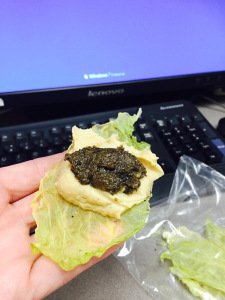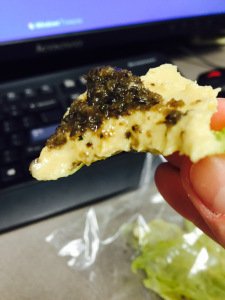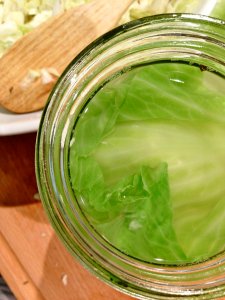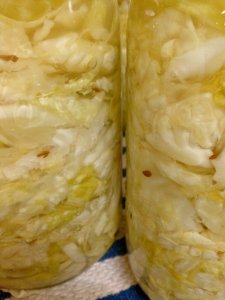
Need a little chip for your work week (or any other time) snack? Try cabbage chips! They’re big enough to hold some serious eats and let you snack until your heart’s content with no guilt. Beach season here I come!
‘Tis the season of sweat. The more your parts aren’t sticking together, the better. Am I right? Much like the rest of the country, I’m always looking for ways to reduce my habitus. Cutting back on carbs always seems to work wonders. But what’s a girl to snack on during movie time? Or who’s gonna help you with your hummus, guacamole, or olive tapenade during lunch time? Cabbage, that’s who. Wait, what? Are you suddenly conjuring ideas of digging into a steamy bowl of braised cabbage while renting 50 Shades of Grey? Flashes of guacamole atop your pile of shredded cabbage? Probably. But that’s not what I mean.
So, undoubtedly you’ve heard of the A-lister favorite, kale chips. Yes, they are good, but they’re a bit like seaweed, get soft fast, and there’s no putting any kind of dip on a kale chip. You could make up some cauliflower crackers, but they do indeed taste a bit like cauliflower (amazing, I know). So, in my hunt for something with a least a little crunch, no grains, fairly flavor-neutral, and big enough to put some dip on…I found cabbage. Much like using collards in place of bread or wraps, using cabbage in place of chips or crackers wipes out grain consumption and reduces carbs and calories.
Trust me, try these and they’ll be a new tool in your fight for wearing your favorite thong bikini!
Cabbage Chips
- 1 head of cabbage (use regular or savoy), separated into leaves, stems removed
- Salty water for blanching
- Ice bath
- Paper towels
- Salt and pepper to taste
- Dehydrator
Gently peel the leaves of cabbage away from head, keeping the leaves intact. Remove stems and blanch. Plunge leaves into ice bath. Drain and pat dry with paper towels (or tea towels to reduce waste). Cut leaves into desired size (for crackers I usually split larger leaves down the middle and keep smaller leaves intact). Place the leaves in a single layers in your dehydrator and season them to taste with salt and pepper.
Dehydrate according to your model’s directions until the leaves are crisp. Mine took 3 hours at 135 degrees. Let the chip-crackers cool completely. To keep them crisp all week, place them in a large Ziploc bag with a desiccant pack and store in the fridge. Feel free to snack away-that thong bikini will still fit!






